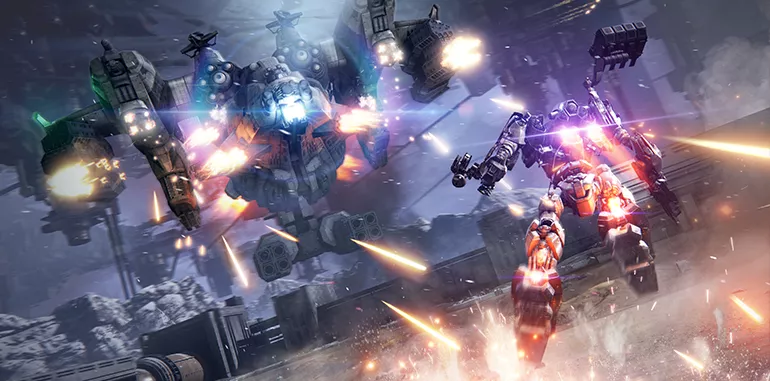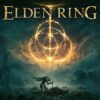While both Armored Core VI: Fires of Rubicon and Elden Ring may share the element of featuring giant robots, it is important to clarify that they are distinct and separate entities. Armored Core VI: Fires of Rubicon stands on its own as a highly anticipated sequel in the Armored Core franchise. Its unique gameplay mechanics, immersive storyline, and intense battles against colossal robotic adversaries set it apart from other games in the genre.
Elden Ring, on the other hand, a role-playing game developed by FromSoftware in collaboration with George R.R. Martin. It explores a vast open-world fantasy setting, delving into intricate lore and offering a different gameplay experience. It is crucial to recognize and appreciate the individual merits of each game rather than conflating them simply due to the presence of giant robots.
For long-time fans of FromSoftware, the announcement of their new game, Armored Core VI, is undoubtedly exciting. Having been the developer's staple before their highly successful Souls games, this return to their roots is a welcome change. However, for those who are unfamiliar with the developer's previous works, Armored Core VI still holds promise. It is a game that should be approached with an open mind and on its own terms. With FromSoftware's reputation for delivering immersive and challenging gameplay experiences, Armored Core VI is certainly worth giving a try, regardless of your familiarity with the developer's past works.
In this dystopian future, where the line between man and machine is blurred, crossing the Rubicon means embarking on a treacherous journey. As you step into the unknown, your trusty mech suit becomes an extension of yourself, a guardian in this harsh reality. The world you crash land into is a wasteland, torn apart by the insatiable greed of extraplanetary corporations. Their relentless pursuit of control over the enigmatic substance known as Coral, akin to the legendary Spice Melange from Dune, has left the planet in ruins.
In the midst of this chaos, you assume the role of a voiceless mercenary, a hound whose actions are guided by the gruff voice of your handler, Walter. He navigates you through the treacherous landscape, briefing you on operations for various factions willing to pay for your services, even if their motives often clash. In this game of survival, morality becomes a blurred concept as you traverse a world consumed by power struggles and the allure of untold riches.
The gameplay in this particular game revolves heavily around combat and reconnaissance missions, which are interspersed with cutscenes and dialogue that play a crucial role in advancing the story. The plot unfolds primarily through conversations happening around and directed towards the speechless avatar.
However, what sets this game apart is the exceptional quality of the writing and voice acting. The dialogue is refreshingly solid, and the voice actors deliver their lines with such conviction that it truly sells the narrative. In comparison to other renowned titles like Dark Souls or Bloodborne, this game offers a lot more exposition. It actually reminded me of Hideo Kojima's Metal Gear series, which is also revered for its compelling storytelling and involvement of mechs.
As a fan of the gothic fantasy found in the Soulsborne games, I approached Armored Core with some skepticism. My only prior experience with the series was playing Armored Core 4: For Answer back in 2008, just to see how it had evolved. I wasn't sure if the focus on gear-centric mech combat would resonate with me. However, after investing numerous hours into the game, immersing myself in the story, and participating in numerous intense NPC arena duels, I found myself becoming more and more captivated by this futuristic world.

The gameplay and mechanics drew me in, and I became increasingly engaged with the challenges presented. Armored Core managed to surprise me, proving that its unique blend of action and strategy can be just as thrilling as the dark and brooding worlds Miyazaki is known for.
When I first started playing Rubicon, I was disappointed that I couldn't freely explore the world. The game's mission-based structure felt restrictive, and I longed for the opportunity to wander aimlessly and discover hidden secrets. However, as I delved deeper into the story of Fires of Rubicon, I began to understand and appreciate the game's streamlined design.
As a hired gun with no apparent morals or agency, there was no reason for me to aimlessly meander. The game's focused objectives and garage menu allowed me to efficiently achieve my goals and progress through the game. Though I still enjoy games that offer freedom and exploration, Rubicon's mission-based rhythm ultimately added to the immersive and engaging experience.
Fires of Rubicon Movement and Mechanics
The Armored Core franchise has always offered players a sense of exhilarating freedom of movement, and this is no different in their latest installment. As players advance through the maps with ruthless efficiency, they are granted the incredible ability to move in any direction, thanks to the omnidirectional action that has become a fundamental aspect of the series. This stands in stark contrast to the more grounded nature of Soulsborne games, known for their roll-dodging and deliberate attack animations.
However, Elden Ring, from the creators of the Souls series, broke new ground by finally giving players the ability to jump. This addition to the gameplay mechanics has been considered groundbreaking, as it expands the range of movement and opens up new possibilities for traversal and combat strategies. Players can now navigate the treacherous landscapes with a newfound agility, adding an extra layer of excitement and dynamism to the gaming experience.
Armored Core's defining feature lies in its fully three-dimensional combat system. Unlike other games in the genre, players have the freedom to boost and thrust their mech suits in any direction, all while unleashing a barrage of firepower. This dynamic gameplay element makes for an exhilarating experience as it allows players to seamlessly navigate the battlefield, dodging incoming attacks and strategically positioning themselves for a counterattack.
It is crucial for players to adapt quickly to the constant movement and multitasking required, as enemies will not hesitate to launch assaults from all corners. Armored Core truly challenges players to master the art of flying and shooting simultaneously, making for an intense and immersive combat experience.
Adaptability and Strategy in Armored Core VI
One of the key advantages of this game is its flexibility in character customization. Unlike traditional action RPGs, players are not confined to a single class or play style. Prior to embarking on each mission, players have the opportunity to tailor their mech to their personal preferences and the specific requirements of the task at hand.
For instance, one might choose a heavily-armored tank equipped with powerful explosives for a particular mission, only to switch to a sleek and agile mech armed with laser weaponry for the next assignment. While mission briefings provide some insight into the optimal choices, the majority of knowledge is acquired through hands-on gameplay, allowing players to continuously adapt their strategies and experiment with different loadouts.
Building a strong assembly is crucial in any game. In the case of this particular game, the player community is bound to discover some meta builds that are optimized for various scenarios. However, the game itself promotes a sense of experimentation and adaptability. It encourages players to constantly explore different possibilities and adapt their mech assembly to suit the requirements of different missions.
Sometimes, the game even presents situations that outright necessitate players switching up their assembly. This not only enhances the overall gameplay experience but also allows players to challenge themselves and discover new strategies constantly.
In Armored Core, leveling up is not an option. Instead, players must rely on a feature called ‘OS tuning' which provides limited attack and defense upgrades with predetermined limits. This means that grinding to increase stats and overpower opponents is not possible. If players find themselves repeatedly dying, they are forced to change their approach. This can involve retooling their mech assembly in search of a more suitable combination for the scenario or taking the time to learn enemy attack patterns and improve their response through practice. Armored Core emphasizes strategy and adaptability rather than relying solely on raw power.
Fires of Rubicon, a game that shares similarities with both Souls and Elden Ring, manages to captivate Armored Core fans with its intense difficulty and epic boss battles. Just like in the renowned Souls series, players are constantly faced with the threat of dying repeatedly, forcing them to master the mechanics and strategies to progress. The game's high difficulty level adds an extra layer of challenge, attracting those who crave a truly demanding experience.
Moreover, Fires of Rubicon excels in delivering breathtaking boss fights that are reminiscent of the epic encounters seen in Elden Ring. These battles require players to utilize their skills and wits to overcome seemingly insurmountable obstacles, providing a thrilling and rewarding experience for fans of both franchises.

Difficulty and Boss Battles
Giant boss battles stood out to me the most, and interestingly, they also became the aspect I had the most difficulty with at first. I longed for the more restricted movement found in games like Dark Souls or Elden Ring. The overwhelming nature of an Armored Core battle, with everything happening all at once, sometimes tempted me to resort to mindlessly mashing buttons. However, as I gradually adapted and became more attuned to the game's pace, I began to experience that gratifying feeling of truly understanding a boss and flawlessly executing its patterns.
If you're someone who is already hesitant about the infamous difficulty of FromSoftware games, then Armored Core probably won't do much to change your mind. Although Elden Ring, their latest title, managed to become more accessible with its multiplayer co-op and friendly summons, Armored Core's online component is a bit limited in comparison. Currently, the online gameplay for Armored Core only offers 1v1 and 3v3 PVP battles.
So, if you were hoping for a more cooperative experience or a larger scale multiplayer option, you might find yourself a bit disappointed. Nonetheless, for those who enjoy intense and challenging player versus player battles, Armored Core could still provide an exhilarating experience.
If you're someone who enjoys a challenge and is open to exploring the world of mech games, then Fires of Rubicon is definitely worth a try. Personally, I was unsure about my interest in this genre, but I found that the game's core philosophy, inspired by Miyazaki and FromSoftware, really won me over. The difficulty level, coupled with the frequent deaths, actually added a new layer of excitement and made the eventual victories all the more satisfying. And let's not forget the sheer fun of maneuvering around in robot armor, equipped with shoulder cannons and laser guns. It's an exhilarating experience that shouldn't be missed.




